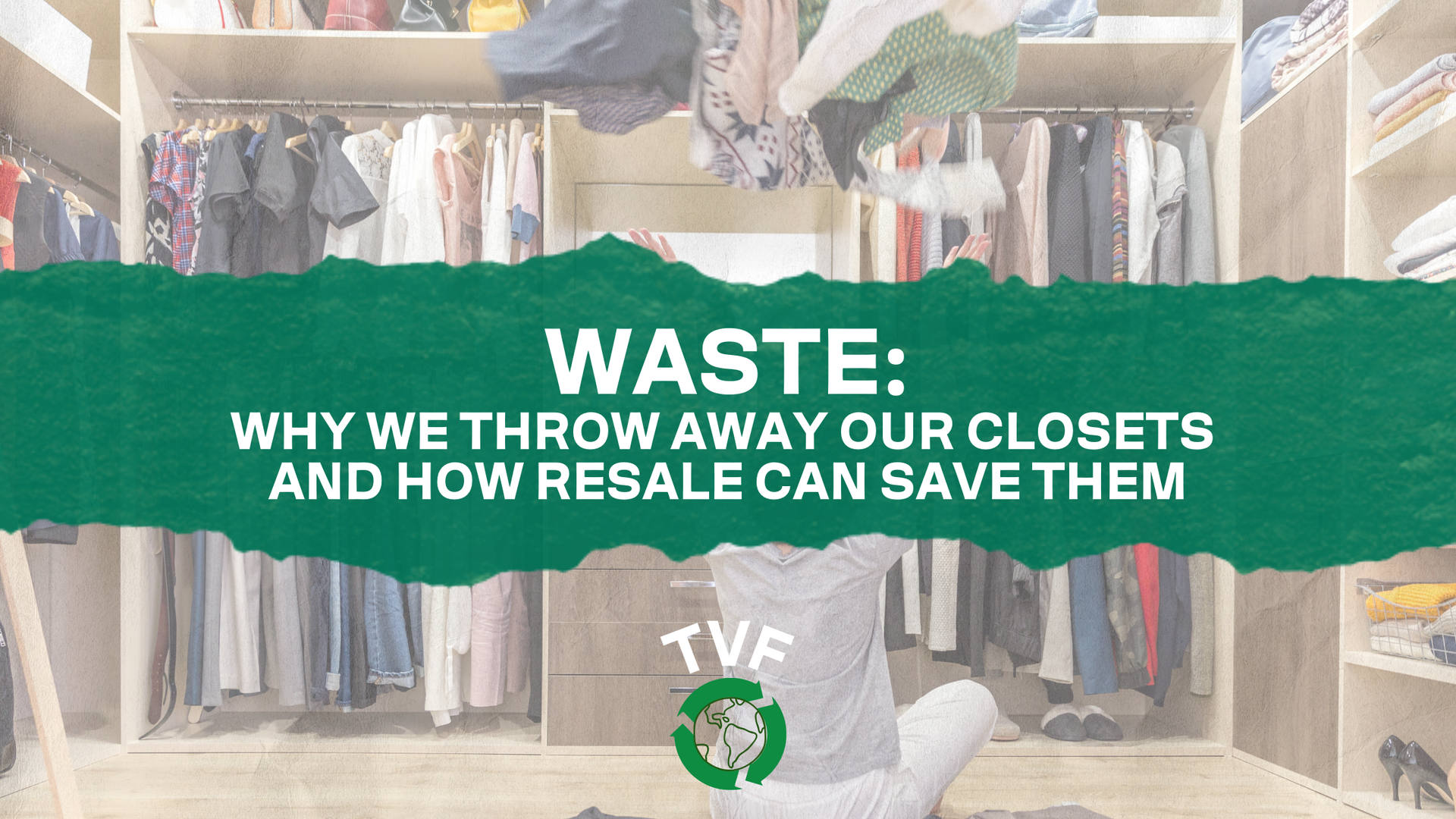
Waste: Why We Throw Away Our Closets and How Resale Can Save Them
Imagine taking everything in your closet — jackets, jeans, tees, sweaters, shoes and dumping it into the trash. Now imagine doing that every single year.
Sounds extreme, right?
But that’s exactly what’s happening.
The average American throws away 81 pounds of clothing annually. That’s not donated, not recycled just tossed. Most of it ends up buried in landfills or burned in incinerators. This isn’t fringe behavior. It’s the norm.
We live in a society that treats clothing as disposable. And the waste is catching up to us environmentally, economically, and culturally. The question now is: how much longer can we afford to live this way?
And more importantly: how do we move forward?
The Invisible Closet Problem
The scale of textile waste is hard to grasp because it happens quietly. It’s not as visible as plastic bottles in the ocean or overflowing landfills outside city limits. But the fashion industry is one of the most wasteful industries on the planet.
Here’s what we’re facing:
- Americans collectively send 11.3 million tons of textiles to landfills every year.
- Most of it is fully wearable or would be, if we shifted our habits.
- The majority of these items are made from synthetic fibers that don’t break down, releasing microplastics and harmful chemicals as they sit in the ground.
And all of this is happening while perfectly good clothing already exists in abundance.
So why are we throwing it all away?
Why We Discard So Easily
Fast fashion taught us that clothes are temporary. We’ve been trained to think of garments not as investments, but as content. Wear it for a photo, for an event, for a moment and then move on.
Here are a few reasons the cycle continues:
- Overproduction: Brands make more than the world needs, encouraging constant consumption.
- Cheap pricing: If a shirt costs $5, it feels easier to throw away than repair.
- Social pressure: Outfits are tied to image, and image changes fast.
- Lack of awareness: Many people simply don’t know what happens to their clothes after they’re tossed.
It’s not always intentional. But the outcome is the same: clothing that could have lived a longer life is discarded like it never mattered.
When Waste Becomes a Collective Crisis
We’re past the point of blaming individuals for their closets. This is a systemic issue, and the only way out is through collective change.
The problem isn’t just that people throw clothes away. It’s that the system is built to make them do it. From marketing that promotes constant newness to policies that don’t hold manufacturers accountable, everything is designed to keep the cycle going.
But the cracks are showing. And more people are asking: When does this stop?
Resale: Giving Clothing a Second Life
The good news? There’s a solution right in front of us.
Resale is the antidote to waste.
When you buy or sell secondhand, you’re not just extending the life of a garment — you’re directly reducing its environmental impact. You’re giving something value again. You’re rejecting the idea that clothing has an expiration date.
What Makes Resale Powerful:
- It prevents waste: Every item resold is one less item in a landfill.
- It slows down production: The more we reuse, the less we need to produce.
- It gives access: Resale provides quality clothing at more accessible prices.
- It empowers communities: Resellers, shop owners, and online curators are turning waste into opportunity, and creating new economies around sustainability.
Everyone Has a Role
Whether you’re a casual shopper or a seasoned reseller, your choices make a difference.
- If you’re cleaning out your closet, consider selling or swapping instead of trashing.
- If you need something new-to-you, look secondhand first.
- If you’re in the business of resale, know that your work is about more than sales, it’s about systems change.
Change starts with one person, one purchase, one piece at a time. But it grows through awareness, accessibility, and a culture that values longevity over novelty.
The Shift Has to Happen, Together
At some point, the conversation around clothing needs to shift from style to substance.
Waste isn't a trend. It’s a crisis. And the fashion industry won’t fix it for us.
But secondhand can.
It’s more than just a better choice — it’s a necessary one. Because when we give clothes a second life, we’re not just changing how we shop.
We’re changing how we live.
